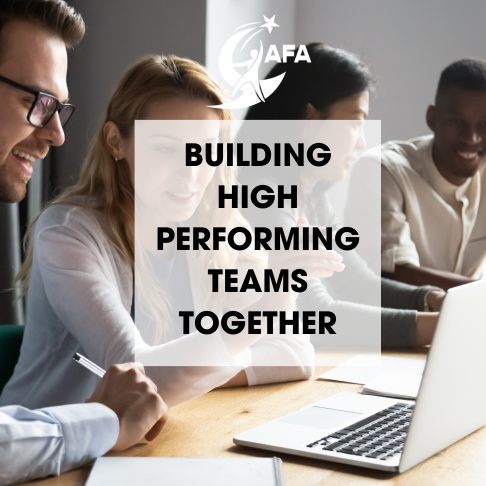Want an offsite in 2024 for your team? Or want to work on adapting your team culture? Schedule a call.

Rating Agile Maturity
09/03/2022
The idea of rating a team’s “Agile Maturity” has always made me uneasy. An agile maturity rating is intended to quantify a team’s progress along its agile transformation journey. Numbers and verbiage differ everywhere, but you could have a team starting at 0 and working their way up to 4; or you could have a team starting at “Basecamp Zero” and ascending to the heights of “Basecamp Three.” Maturity ratings typically depend on a subjective assessment of how “agile” the team’s practices, behaviors and mindset are; for example, a team that does not practice automated unit testing could begin at a 0, and when they are proficient at it perhaps that indicates they are now at a 3. Maybe a team at Basecamp One relies mostly on annual individual performance assessments, and a team at Basecamp Two has begun to incorporate team-based assessments and performance objectives.
Seeking a way to measure progress
Most organizations begin the practice of tracking their teams’ agile maturity numbers because they long for a way to measure the overall progress of their Agile Transformation, and they feel that measuring individual team maturity, however it is defined there, is a good proxy for this. Some organizations compare teams’ agile maturity ratings against each other, ranking from top to bottom, as an input for performance and bonus considerations. These needs are reasonable in that they tend to stem from a desire to have the agile transformation be quantifiable, a way to show ROI through cold, hard numbers.
What is missing?
Recently I was able to put words to the discomfort I felt at this practice. What the organization is really missing (and thus trying to fill this void via an agile maturity rating) is a set of measurable, valuable objectives that the teams are responsible for achieving. This is the only true indicator that the transformation is of benefit to the organization: progress towards valuable enterprise goals.
Measuring a team’s agile maturity is like going to psychotherapy sessions and measuring how positive you feel about each session as you walk out the door. Are there some interesting insights to be gained by taking this measurement? Probably, but do they indicate your overall, big-picture progress towards addressing the reason why you started therapy in the first place? Probably not.
When you embark on a therapeutic journey you are likely to begin because there is an issue you need support to address. Perhaps you experience a form of anxiety. Maybe you suffered a traumatic event and need some support during the healing process. Perhaps you are simply trying to live your best life and find that therapy with a trained, empathetic professional helps you get where you want to go. Ultimately you would probably assess your progress in terms of therapy’s impact on your overall health - has there been a change in how you experience anxiety? Did you seek out support to help process the trauma? Has therapy helped you with your personal journey?
There are a million ways you could define “progress” when it comes to personal therapy, and the only one who could define those goals would be the one receiving it. But the point is that you would probably not look at changes in your assessment of the therapist’s technique itself, limiting your assessment to what happens within those four walls, as a measure of efficacy; what’s important is the impact that those sessions have on your health and well-being, however you choose to define them.
Is it all bad?
You may be wondering if I would choose to do away with all agile maturity assessments - the answer, of course, is no. Agile maturity assessments can help teams adapt, gain self awareness, help identify new paths forward, and trigger meaningful conversations. In some cases, giving assessments a number can help teams ground where they are today and where they want to go. What I object to is the overemphasis on externally measuring and reporting on a team’s maturity rating without appropriate context, particularly in the absence of defined, measurable goals that spell out what the enterprise considers to be valuable and how the teams are contributing to them.
Rating a team’s agile maturity is like rating the taste of the flour you use to bake a cake, and ignoring how the cake actually tastes. We are purchasing a baked good, not the raw ingredients that go into it. It’s likely that the quality and taste of the flour have an impact on the taste of the cake, but does that fancy flour rating really matter if you aren’t measuring how well the cake turned out?
Want to explore this topic and others around agility? Schedule a FREE consultation to determine how we can work with you and explore our programs to see which ones will help you continue your journey toward agility.
Let's Talk
About the Author:
 SARAH FRIEDMAN-CINTRON
SARAH FRIEDMAN-CINTRON
Sarah Friedman-Cintron is the founder of SFC Coaching, a small shop providing Lean and Agile coaching and training to enterprises, teams, and individuals. She has served in the commercial and government realms and leverages a practical, incremental approach to work culture improvements, transformations, and personal/professional growth.
Connect with us
 |
 |
 |
Search

WELCOME TO THE AGILITY FOR ALL LEARNING PORTAL
We offer loads of free information here in the blog and also in our
resource library
Agility for All provides coaching, consulting, and training programs. In addition to specialized consulting, you have the option to choose from:
- group coaching programs
- masterclasses
- 1-week intensive offsites
Our programs are designed to help your organization to:
- Maximize Employee Engagement
- Foster Self-Organization
- Encourage Innovation
- Attain Higher Performance
- Be More Agile
